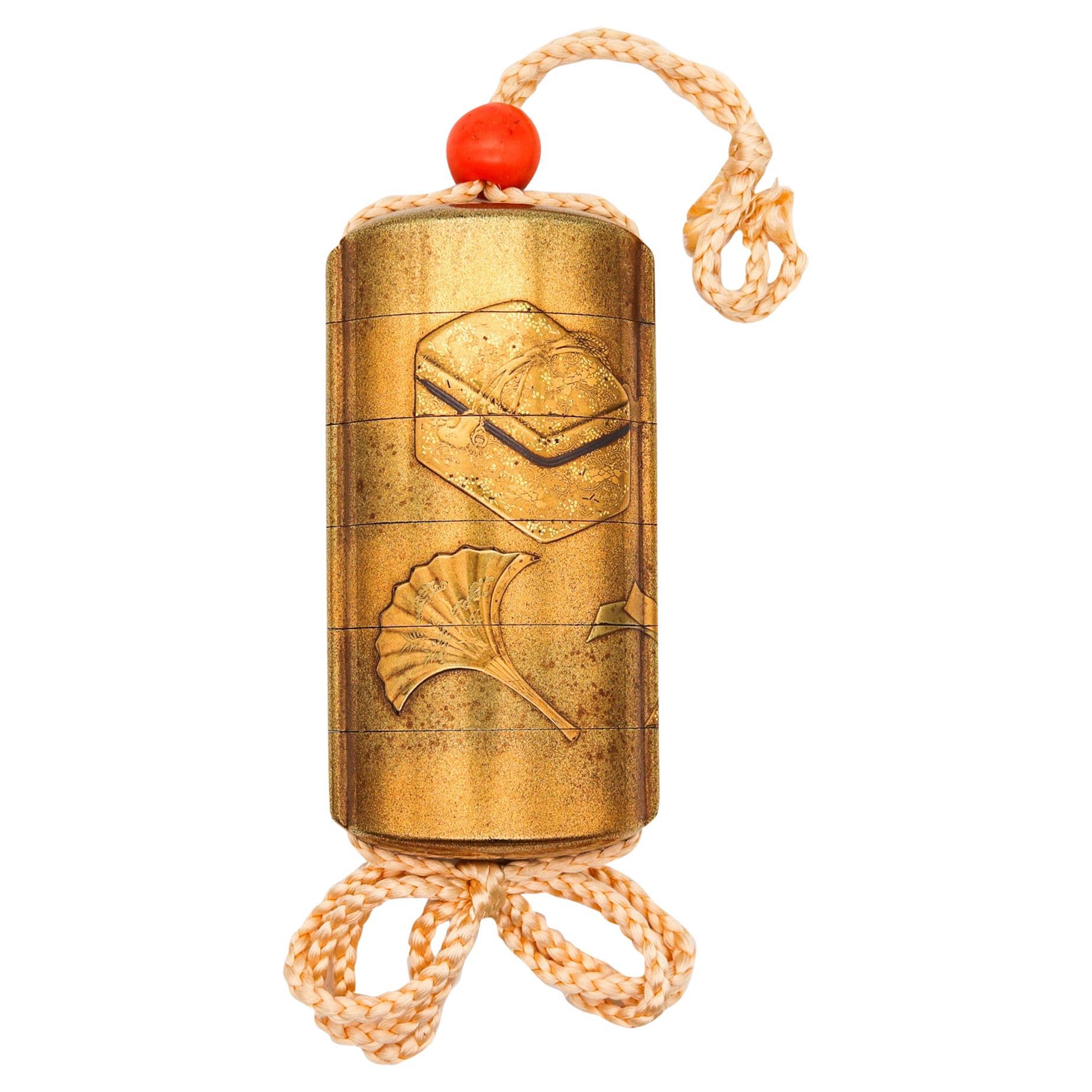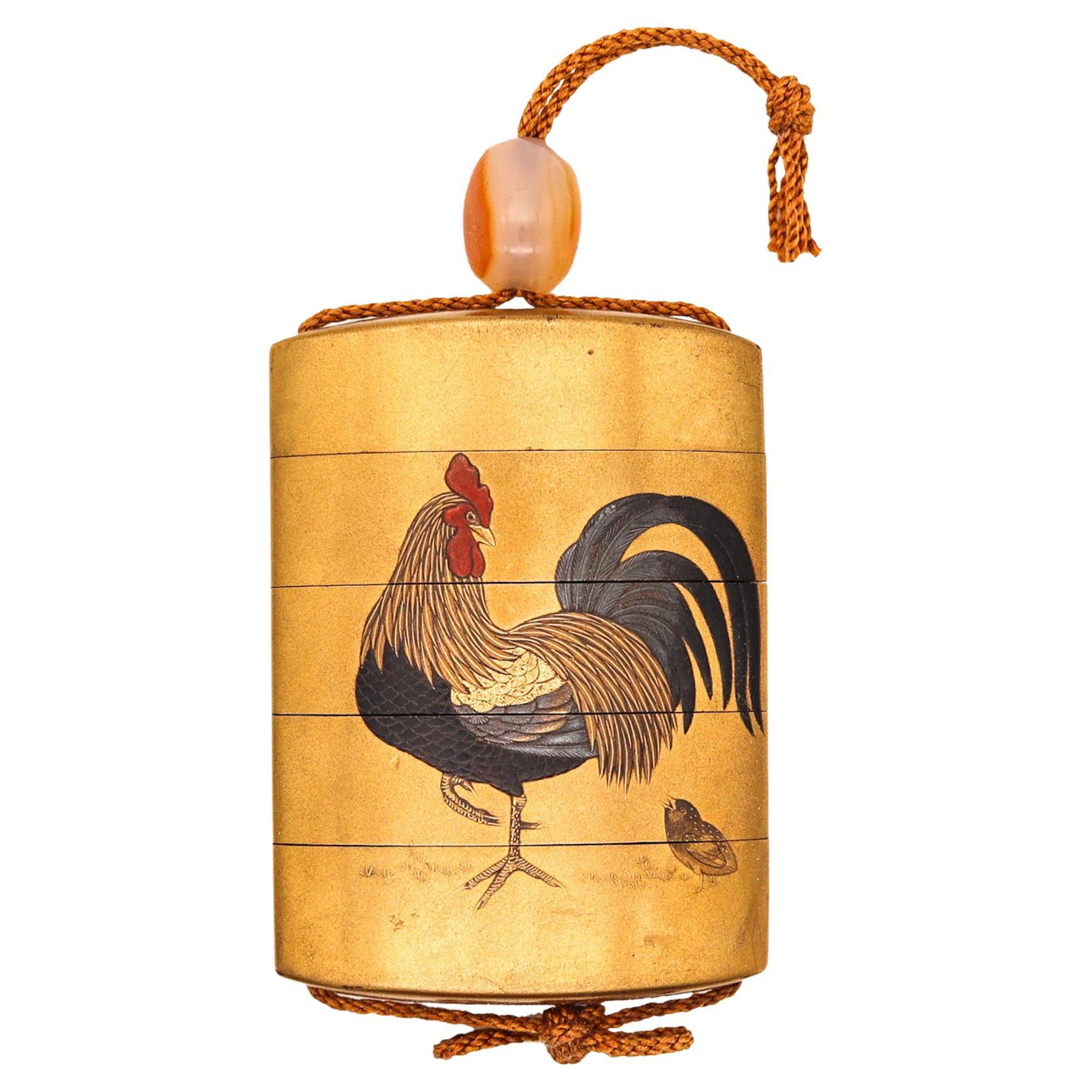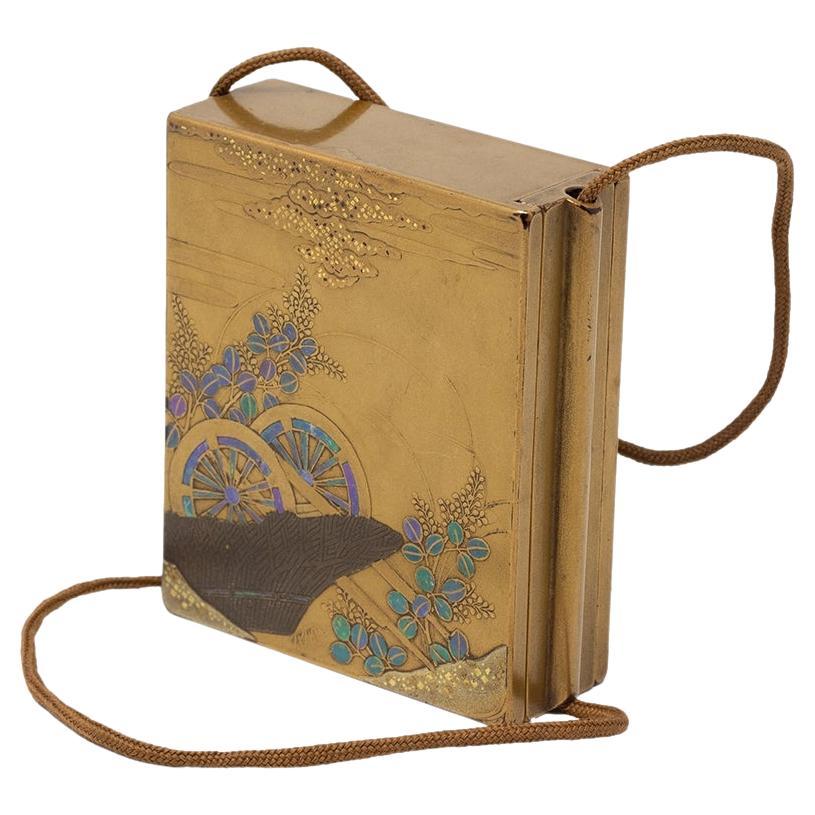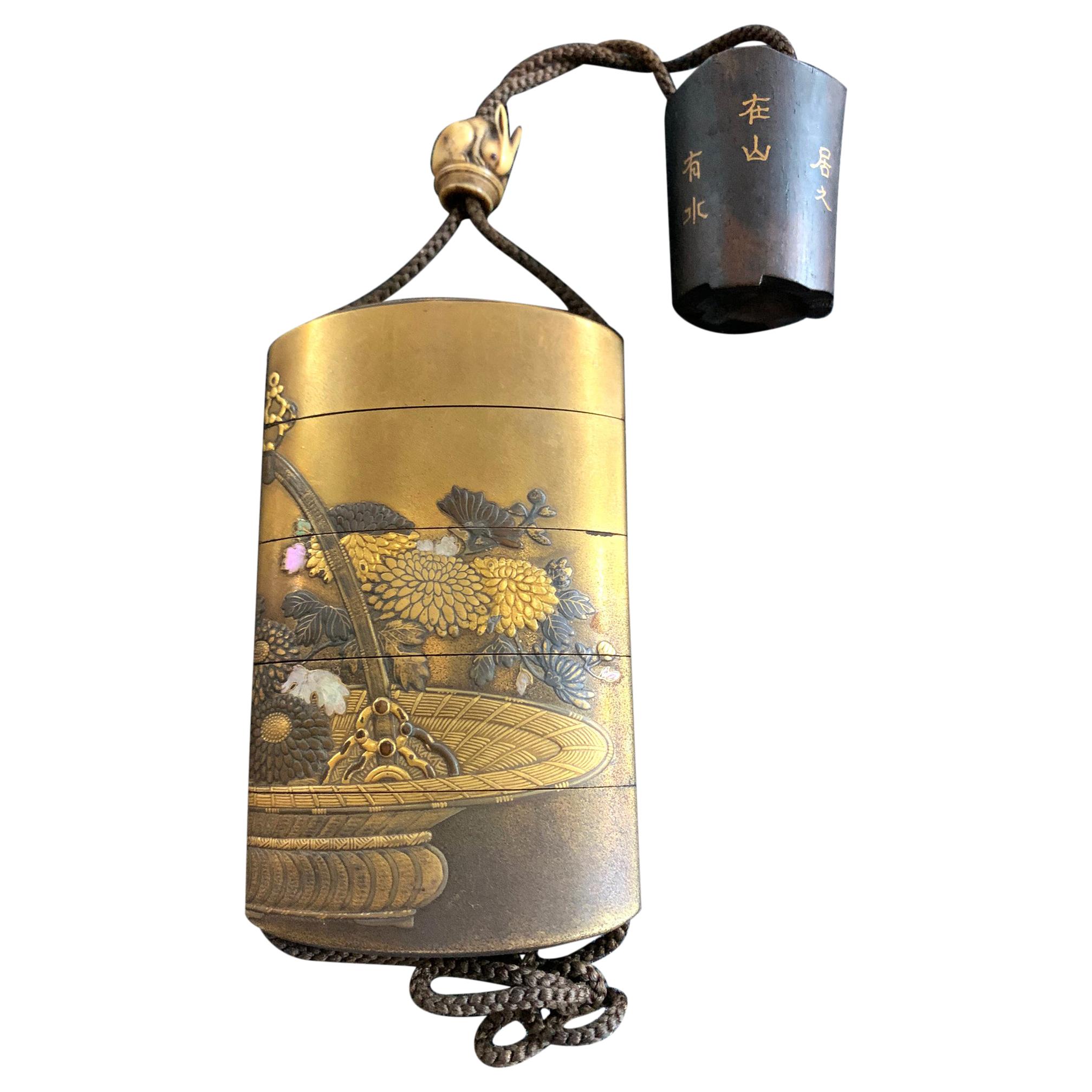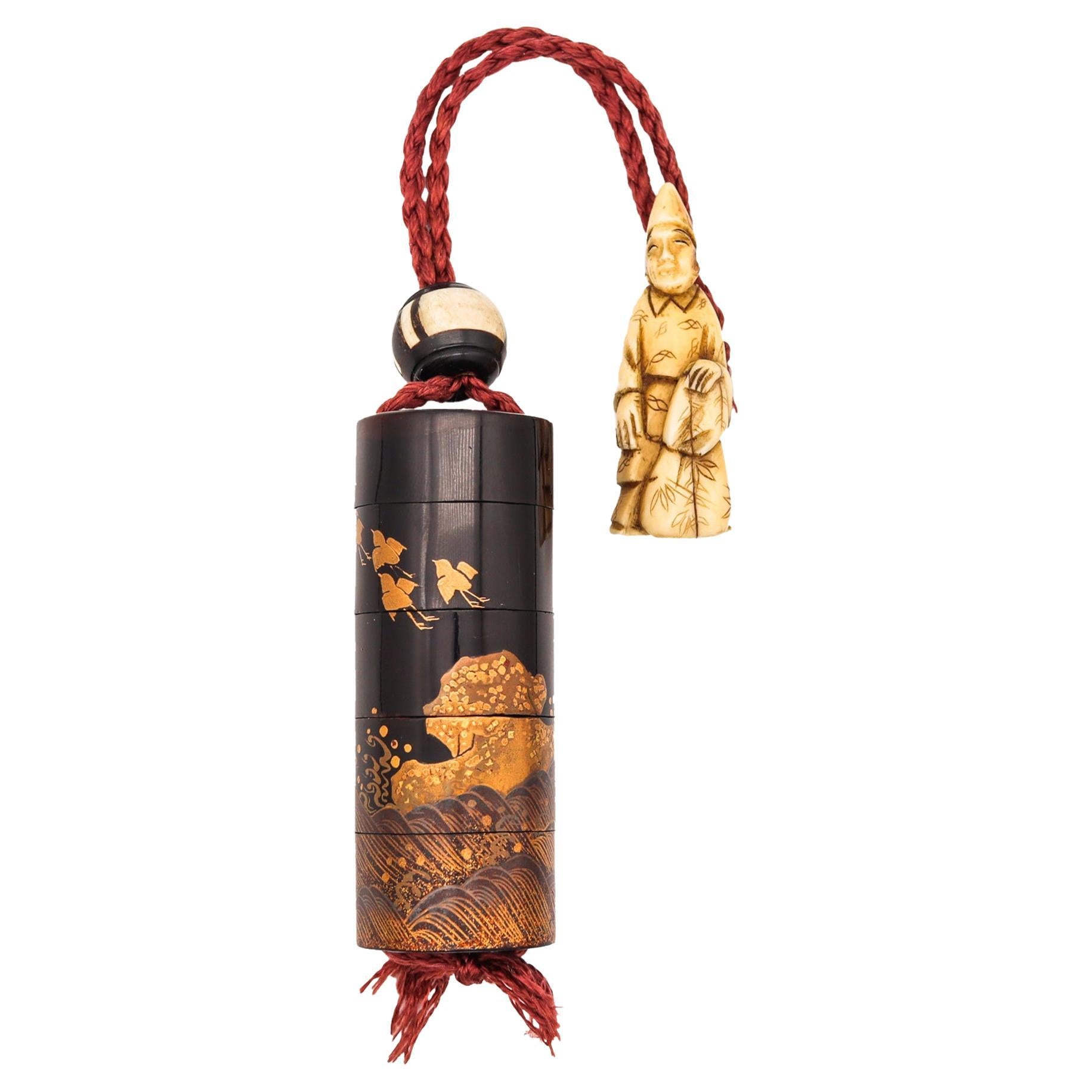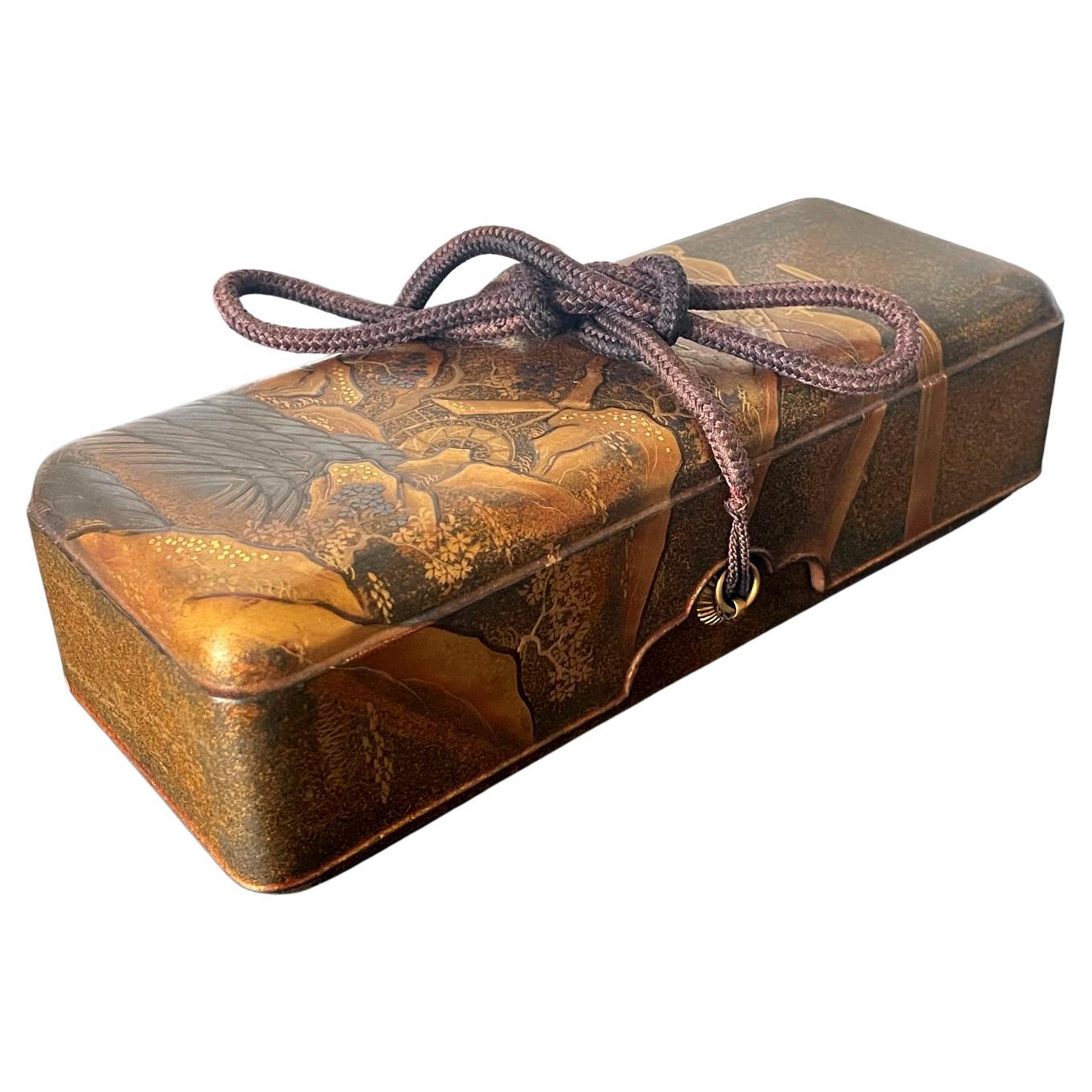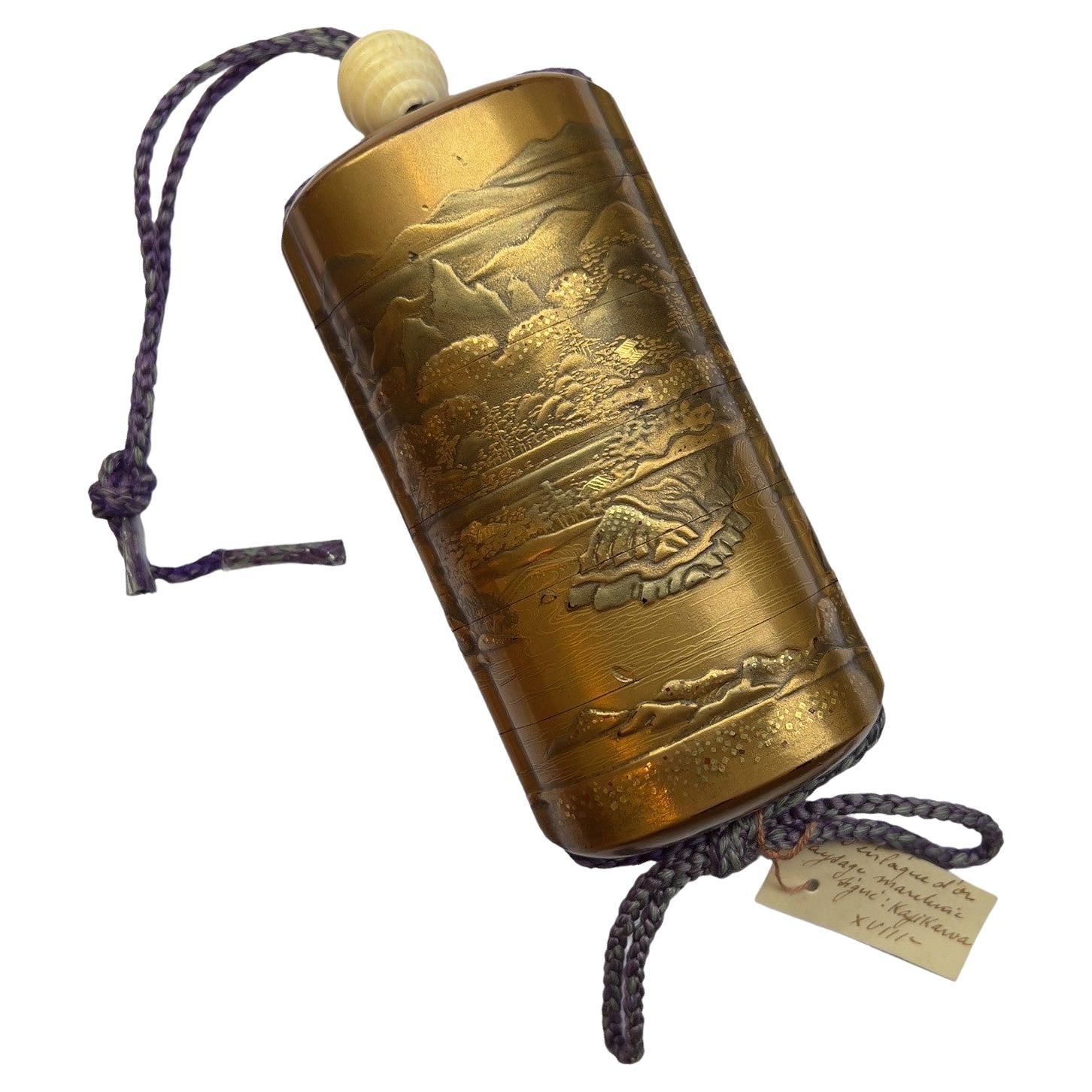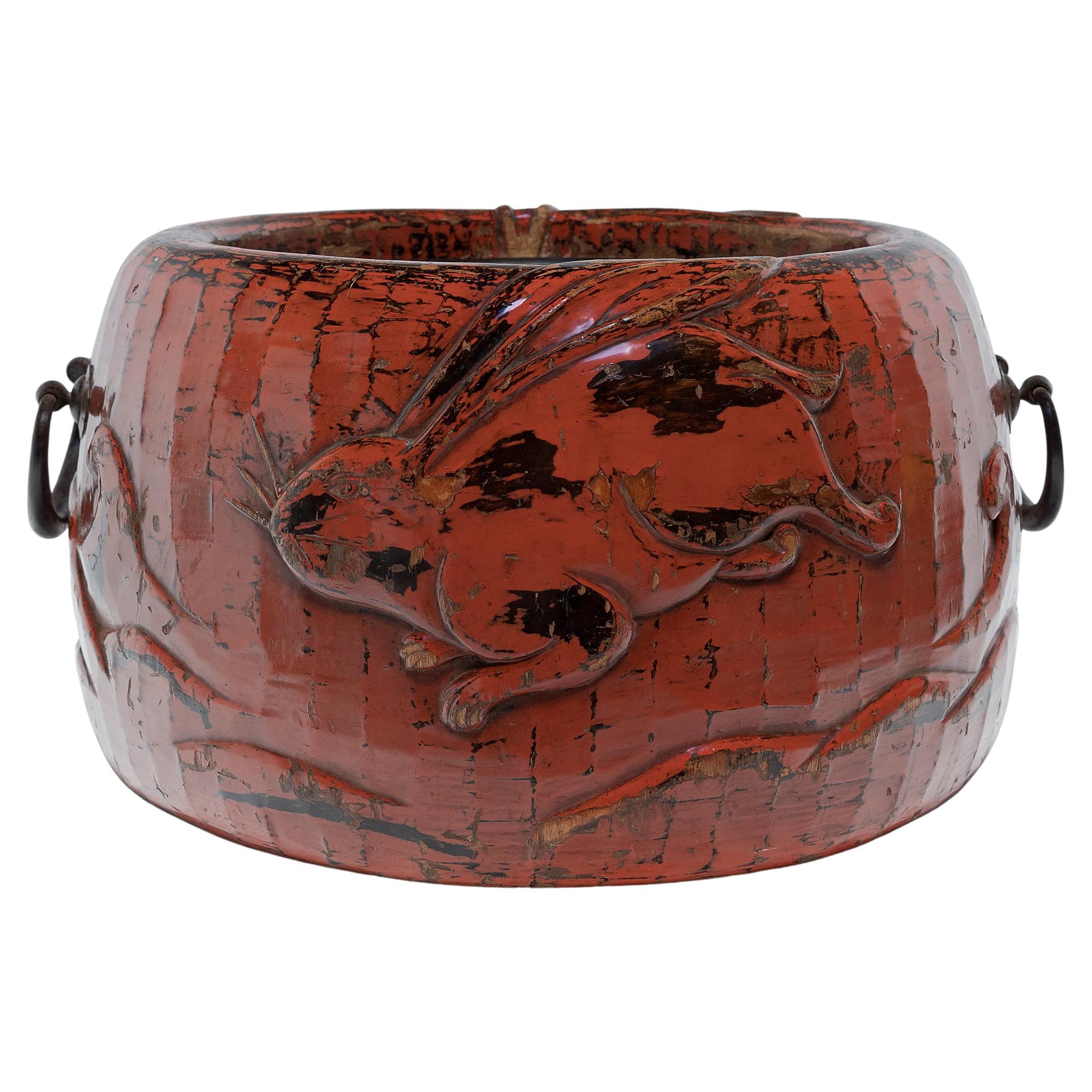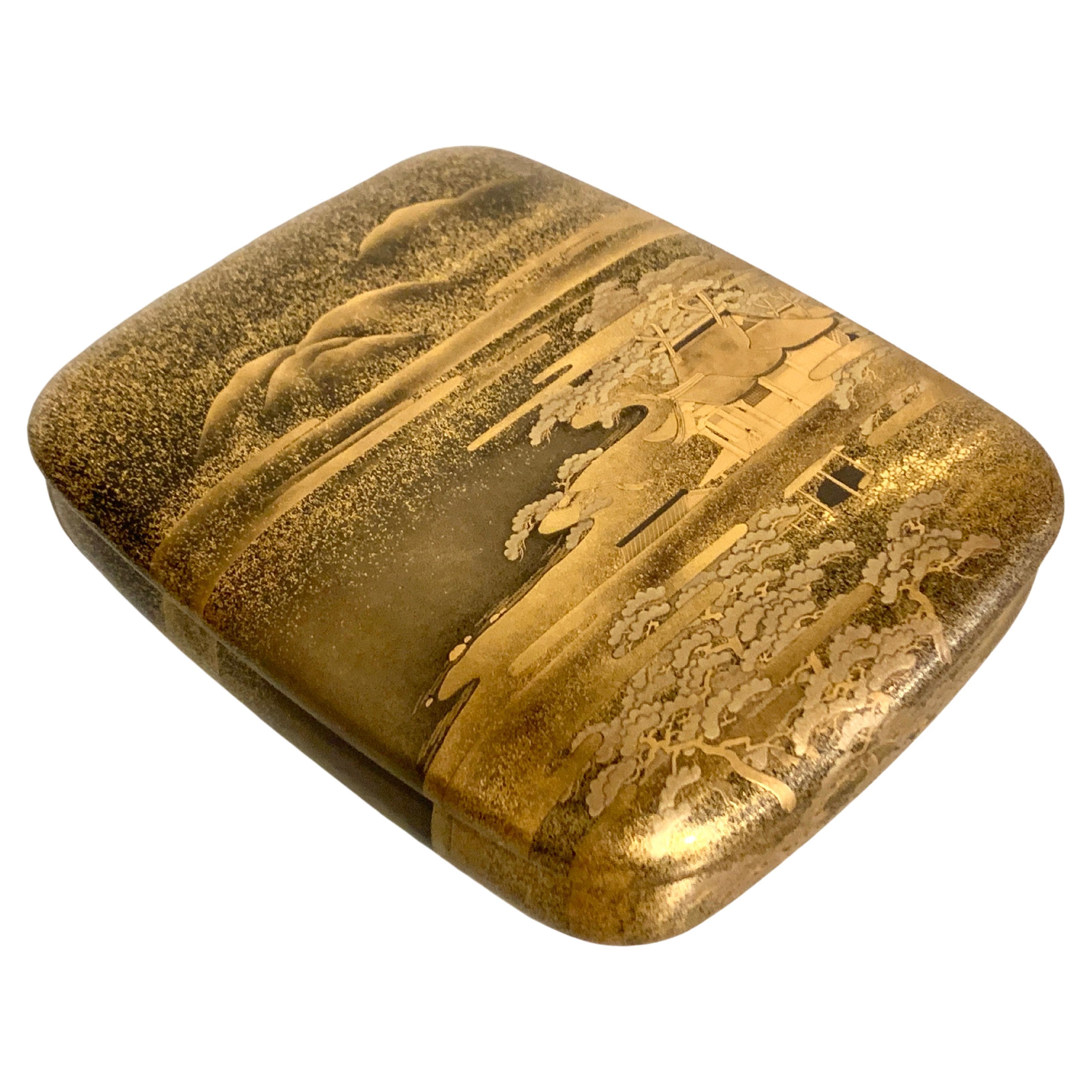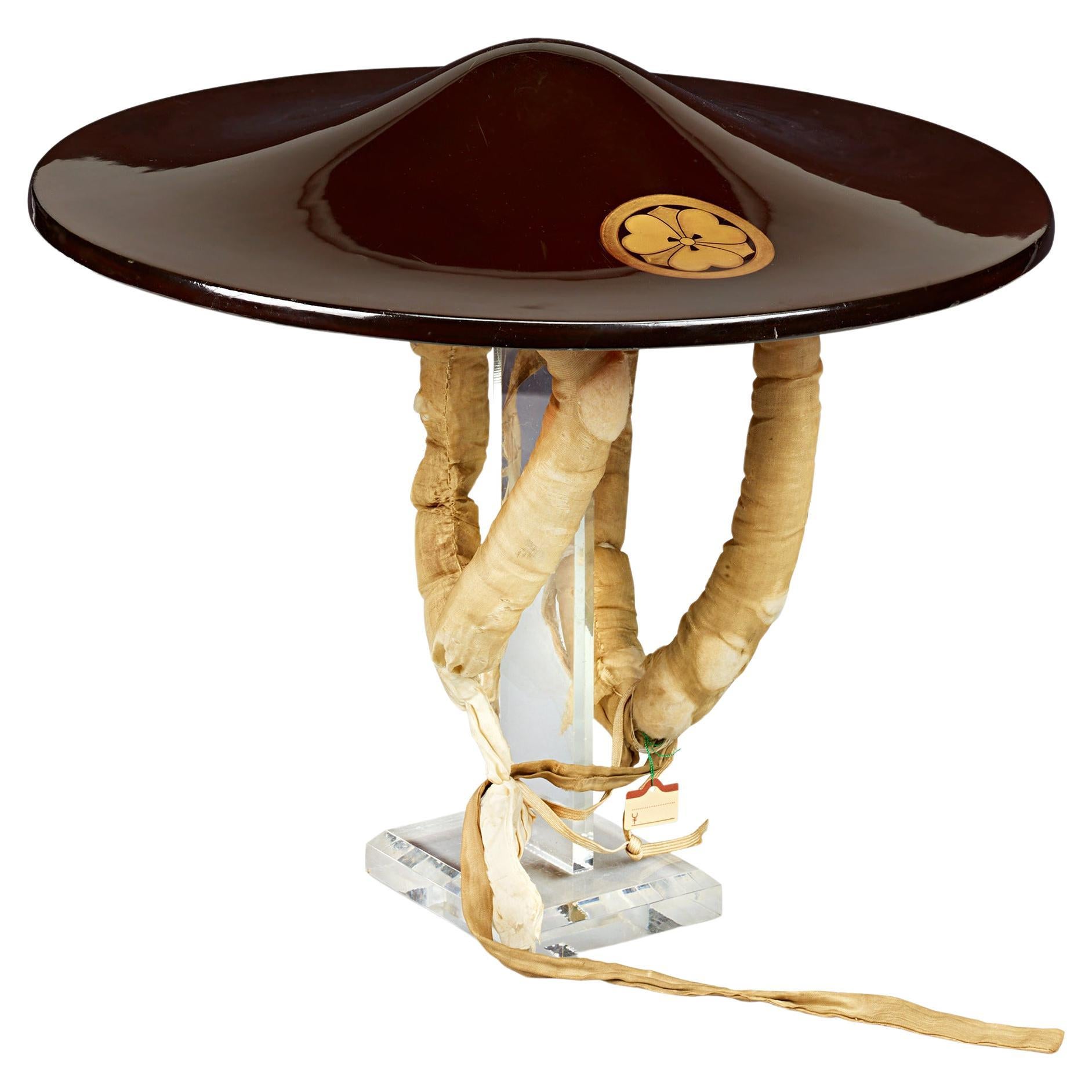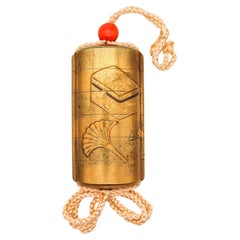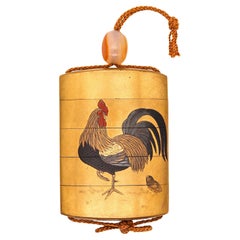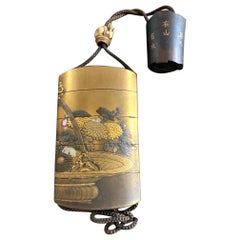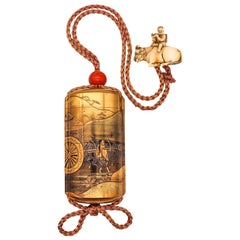
Japan 1830 Edo Period Six Drawer Inro In Lacquered Gilt Wood With A Carriage
View Similar Items
Want more images or videos?
Request additional images or videos from the seller
1 of 8
Japan 1830 Edo Period Six Drawer Inro In Lacquered Gilt Wood With A Carriage
About the Item
- Dimensions:Height: 3.6 in (9.15 cm)Width: 1.5 in (3.81 cm)Depth: 1.06 in (2.7 cm)
- Style:Edo (Of the Period)
- Materials and Techniques:
- Place of Origin:
- Period:
- Date of Manufacture:1830
- Condition:Wear consistent with age and use. The overall condition of this Inro is excellent. Beside the little normal wear, there is no damage to any part. All part are original and secured. This piece has been carefully inspected to guarantee the condition and authenticity.
- Seller Location:Miami, FL
- Reference Number:Seller: D070523ATEN/.11111stDibs: LU8303235127822
About the Seller
5.0
Platinum Seller
These expertly vetted sellers are 1stDibs' most experienced sellers and are rated highest by our customers.
1stDibs seller since 2023
63 sales on 1stDibs
More From This SellerView All
- Japan 1800 Edo Period Six Drawer Inro In Lacquered Gilt Wood With UtensilsLocated in Miami, FLJapanese Inro from the Edo Period (1603-1867). Beautiful Inro, created in Japan during the Edo period (Shogunate), circa 1800. It was carefully crafted in carved precious wood with ...Category
Antique Early 1800s Japanese Edo Lacquer
MaterialsCoral
- Japan 1810 Kajikawa Edo Period Five Drawer Inro Lacquered Gilt Wood With RoosterLocated in Miami, FLJapanese Inro from the Edo period (1615-1868) created by Kajikawa. Beautiful Inro, created in Japan by one of the Kajikawa family during the Edo period (1615-1868), circa 1810. Has been carefully crafted in carved precious wood with applications of gilding maki-e and decorated with Japonism patterns. All dan trays are attached together with a himo cord. The detailed craftsmanship was a true pleasure to behold. Period: Edo period (1615-1868). Shogunate. Approximate Date: 1790-1810 Motif: A family of birds consisting of a cockerel, the hen and three chicks. Drawers: Five. Shape: Rectangular navette. Technique: Carved wood, lacquer and decorated in iroe-hiramaki-e on a gold ground. Ojime: 15mm 20mm, oval carved from natural translucent agate. Netsuke: None Weight: 47.70 Grams. Measurements: Inro is 78 mm by 55 mm by 18 mm (3.07 x 2.17 x 0.71 Inches). Signatures: Kajikawa Saku, in the underside with the signature KAJIKAWA. By a member of the Kajikawa family, signed Kajikawa 梶川 Japan, late 18th century to early 19th century, Edo period (1615-1868). The Kajikawa family Kajikawa family, flourished in the 19th century, they was Japanese lacquerware artists whose school in Edo (now Tokyo) flourished for more than 200 years. This family is perhaps the most famous of all the dynasties of Japanese lacquer artists, and certainly the name most often found on inro. The family is said to have been founded by Hikobei at Edo in the early 17th century, although some claim that the family’s great reputation really stemmed from his son and pupil Kyujiro. In any event, Hikobei worked for the shogunate, as did his successors until well into the 19th century. Kijirō excelled in designing particularly delicate lacquer inrō, portable medicine cases...Category
Antique 1810s Japanese Edo Lacquer
MaterialsAgate, Gold
- Japan 1870 Meiji Period Round Five Drawer Inro Lacquered Wood With Flying CranesLocated in Miami, FLJapanese Inro from the Meiji Period (1868-1912). Beautiful Inro, created in Japan during the Meiji imperial period, circa 1870. It was carefully crafted in carved precious wood with...Category
Antique 1870s Japanese Meiji Lacquer
MaterialsGiltwood, Lacquer, Wood, Ebony
- Japan 18th Century Edo Period Five Drawer Inro Lacquered Gilt Wood With RoosterLocated in Miami, FLJapanese Inro from the Edo period (1615-1868) Beautiful Inro, created in Japan during the Edo (1615-1868) Shogunate period circa Late 18th century. It was carefully crafted in carve...Category
Antique 18th Century Japanese Edo Antiquities
MaterialsSilver
- Japan 1900 Meiji Miniature Hanagamidai Cabinet in Gilded Wood & Sterling SilverLocated in Miami, FLMiniature hanagamidai cabinet from the Japan meiji (1858-1912) period. Gorgeous and rare miniature drawers hanagamidai (cosmetic cabinet), created in the imperial Japan during the...Category
Antique Early 1900s Japanese Meiji Lacquer
MaterialsGold, Silver, Sterling Silver
- Japan 1890 Meiji Period Decorative Vase In Cloisonné Enamel With Wood BaseLocated in Miami, FLJapanese vase from the Meiji Period (1868-1912). Beautiful antique decorative vase, created in Japan during the Meiji period (1868-1912), circa 1890s. It was carefully crafted in so...Category
Antique 1890s Japanese Meiji Metalwork
MaterialsBronze, Enamel
You May Also Like
- Japanese Meiji Period Lacquer Six Drawer InroLocated in Newark, EnglandThe Inro is decorated with a gold lacquer base and features mother of pearl shell inlay leaves surounding wheeled cart with foliage. The Inro with a slide action opening which hides ...Category
Antique Late 19th Century Japanese Meiji Lacquer
MaterialsRope, Lacquer
- Rare Japanese Sumi-E Lacquer Inro Yamada Jokasai Edo PeriodLocated in Atlanta, GAA three-case lacquered Inro by Yamada Family circa 18th-19th century Edo period. The inro with slight rounded form is of Kano style and vividly depicts a dragon slithering among the ink clouds on a gold background. Sumi-e togidashi (ink togidashi) technique, in combination with Hiramaki-e, were employed to create the dreamy ambience of this piece. The dragon has a painterly appearance inspired by Chinese ink painting that was often seen on the Japanese folding screens. The back of the Inro was sparsely decorated with the shifting patterns of the darkening clouds with an emphasis on the space intentionally left empty. Jokasai was signed to the base. On the front of the inro there is another miniature signature Hakugyoku Hogen, which is one of names used by Kano Michinobu (1730-1790). The dragon is evidently one of his designs (see reference below). Established by a member of Yamada family in the 17th century, the clan was one of the most prominent lacquer artisanal family for the next 200 years until the end of Edo period in the 19th century. Most members signed their work simply with Jokasai making the identification of the individual artists somewhat impossible. The current Inro on offer, compared to many other pieces by Jokasai, has an uncommon Kano style done in Sumi-e togidashi. Another unusual feature of this piece is that the interiors of the inro was decorated with an interesting gold mosaic inlays (kirigane) on a dark lacquer background, giving it a jewel like quality. For another Inro by Jokasai of a similar style using Sumi-e togidashi but depicts a tiger, see Wrangham collection, no.353, which was offered for sale as lot 256 in Bonham's London Auction: The Edward Wrangham Collection of Japanese Art Part I. 9 Nov 2010. For an ink scroll...Category
Antique 18th Century Japanese Japonisme Lacquer
MaterialsWood, Lacquer
- Antique Japanese Inro by Shigehide Edo PeriodLocated in Atlanta, GAThis exquisite four-case lacquered inro was dated to the latter part of 18th century to early 19th century (Edo period) and made by Shigehide. The opposite sides of the inro together features a lavish flower arrangement in a bamboo basket (ikebana). The detailed craftmanship was a true pleasure to behold. Mostly Takamaki-e (high relief) were used to texturize the delicate petals of the chrysanthemums, on which different shades of gold were used to create contrast. Raden (mother of pearl) shells were also used to highlight some leaves, rendering the piece an interesting balance of color and material. The interior was completed in a mottled gold finish. It was signed Shigehide on the bottom with a Kao. There is a small carved rabbit ojime bead...Category
Antique Late 18th Century Japanese Japonisme Lacquer
MaterialsWood, Lacquer
- Japanese Inro by Koma Koryu Edo PeriodLocated in Atlanta, GAA four-case lacquered inro by Koma Koryu circa 19th century late Edo period. The inro features a pair of Chinese mandarin duck resting under a bundle of blooming irises on the pond. ...Category
Antique 19th Century Japanese Japonisme Lacquer
MaterialsWood, Lacquer
- Japanese Lacquered Maki-e Fubako Edo PeriodLocated in Atlanta, GAA Japanese lacquered wood fubako (a box used to store document or small scroll painting), circa second half of 19th century late Edo period. The rectangular box features an unusually deep lipped lid with slightly rounded corners, a conforming lower box that is almost entirely covered by the lid which has two bronze medallion rings with tasseled...Category
Antique 19th Century Japanese Edo Lacquer
MaterialsWood, Lacquer
- Japan, Late 18th Century Gold Lacquer Inro by Kajikawa, Edo PeriodLocated in PARIS, FRLate 18th century Inro by Kajikawa. Edo period Beautiful inro in gold lacquer representing a continuous landscape on both sides. The interior in Nashiji lacquer. Some small traces...Category
Antique 18th Century Japanese Lacquer
MaterialsLacquer
Recently Viewed
View AllMore Ways To Browse
Edo Inro
Antique Inro
Japanese Cinnabar
Japanese Negoro Lacquer
Japanese Hat Box
Japanese Arrowheads
Japanese Inkstone
Negoro Lacquer 20th Century
Japanese Lacquer Comb
Antique Japanese Bento Box
Antique Japanese Wedding Box
Asian Bento Boxes
Bento Box Vintage
Burmese Temple Box
Japanese Antique Bento
Sofu Teshigahara
Vintage Wooden Paper Tray
Antique Japanese Lacquer Kobako
